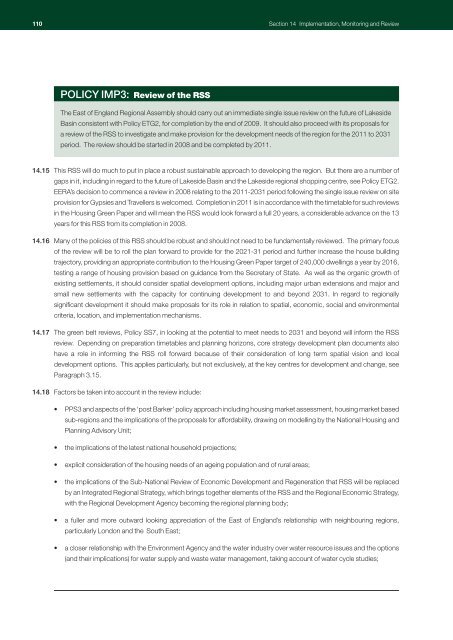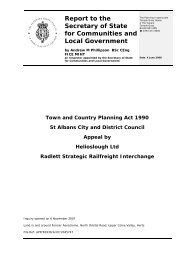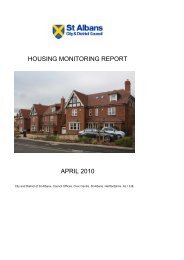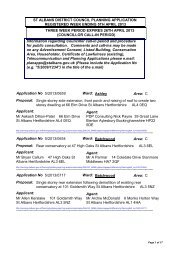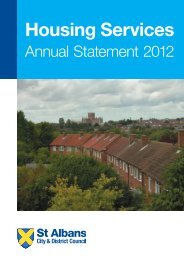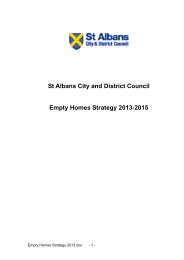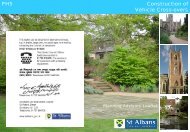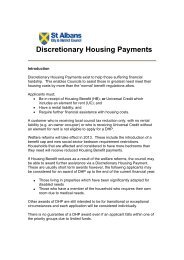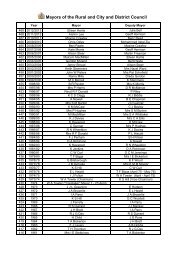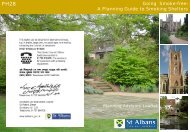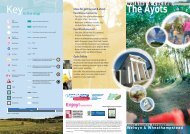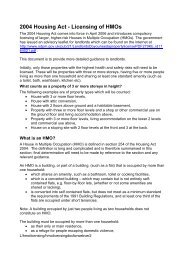RSS East Of England Plan - Broads Authority
RSS East Of England Plan - Broads Authority
RSS East Of England Plan - Broads Authority
Create successful ePaper yourself
Turn your PDF publications into a flip-book with our unique Google optimized e-Paper software.
110<br />
Section 14 Implementation, Monitoring and Review<br />
POLICY IMP3: Review of the <strong>RSS</strong><br />
The <strong>East</strong> of <strong>England</strong> Regional Assembly should carry out an immediate single issue review on the future of Lakeside<br />
Basin consistent with Policy ETG2, for completion by the end of 2009. It should also proceed with its proposals for<br />
a review of the <strong>RSS</strong> to investigate and make provision for the development needs of the region for the 2011 to 2031<br />
period. The review should be started in 2008 and be completed by 2011.<br />
14.15 This <strong>RSS</strong> will do much to put in place a robust sustainable approach to developing the region. But there are a number of<br />
gaps in it, including in regard to the future of Lakeside Basin and the Lakeside regional shopping centre, see Policy ETG2.<br />
EERA’s decision to commence a review in 2008 relating to the 2011-2031 period following the single issue review on site<br />
provision for Gypsies and Travellers is welcomed. Completion in 2011 is in accordance with the timetable for such reviews<br />
in the Housing Green Paper and will mean the <strong>RSS</strong> would look forward a full 20 years, a considerable advance on the 13<br />
years for this <strong>RSS</strong> from its completion in 2008.<br />
14.16 Many of the policies of this <strong>RSS</strong> should be robust and should not need to be fundamentally reviewed. The primary focus<br />
of the review will be to roll the plan forward to provide for the 2021-31 period and further increase the house building<br />
trajectory, providing an appropriate contribution to the Housing Green Paper target of 240,000 dwellings a year by 2016,<br />
testing a range of housing provision based on guidance from the Secretary of State. As well as the organic growth of<br />
existing settlements, it should consider spatial development options, including major urban extensions and major and<br />
small new settlements with the capacity for continuing development to and beyond 2031. In regard to regionally<br />
significant development it should make proposals for its role in relation to spatial, economic, social and environmental<br />
criteria, location, and implementation mechanisms.<br />
14.17 The green belt reviews, Policy SS7, in looking at the potential to meet needs to 2031 and beyond will inform the <strong>RSS</strong><br />
review. Depending on preparation timetables and planning horizons, core strategy development plan documents also<br />
have a role in informing the <strong>RSS</strong> roll forward because of their consideration of long term spatial vision and local<br />
development options. This applies particularly, but not exclusively, at the key centres for development and change, see<br />
Paragraph 3.15.<br />
14.18 Factors be taken into account in the review include:<br />
• PPS3 and aspects of the ‘post Barker’ policy approach including housing market assessment, housing market based<br />
sub-regions and the implications of the proposals for affordability, drawing on modelling by the National Housing and<br />
<strong>Plan</strong>ning Advisory Unit;<br />
• the implications of the latest national household projections;<br />
• explicit consideration of the housing needs of an ageing population and of rural areas;<br />
• the implications of the Sub-National Review of Economic Development and Regeneration that <strong>RSS</strong> will be replaced<br />
by an Integrated Regional Strategy, which brings together elements of the <strong>RSS</strong> and the Regional Economic Strategy,<br />
with the Regional Development Agency becoming the regional planning body;<br />
• a fuller and more outward looking appreciation of the <strong>East</strong> of <strong>England</strong>’s relationship with neighbouring regions,<br />
particularly London and the South <strong>East</strong>;<br />
• a closer relationship with the Environment Agency and the water industry over water resource issues and the options<br />
(and their implications) for water supply and waste water management, taking account of water cycle studies;


